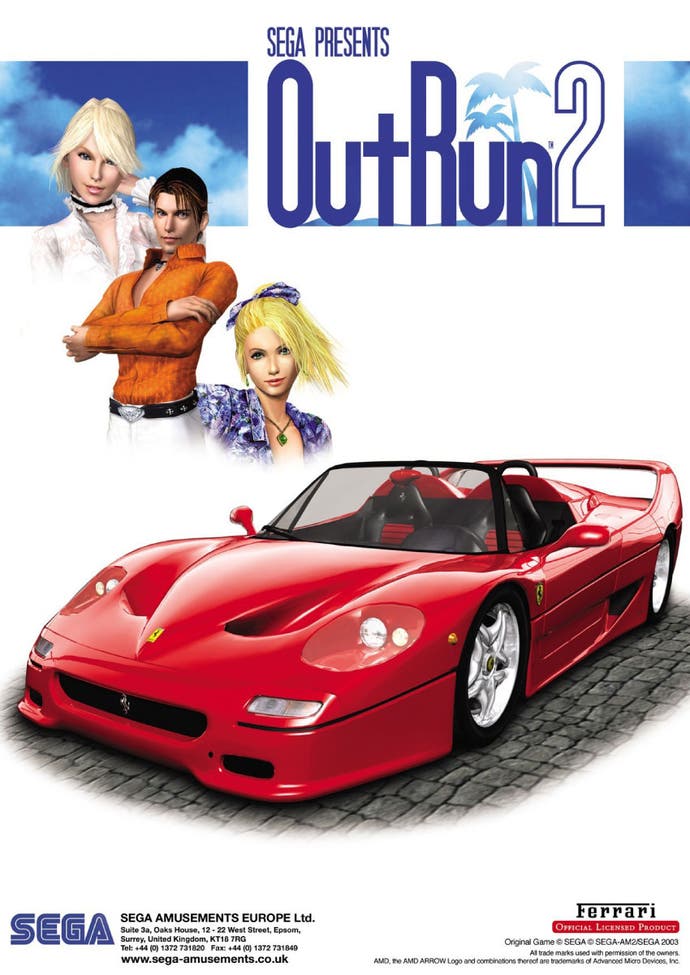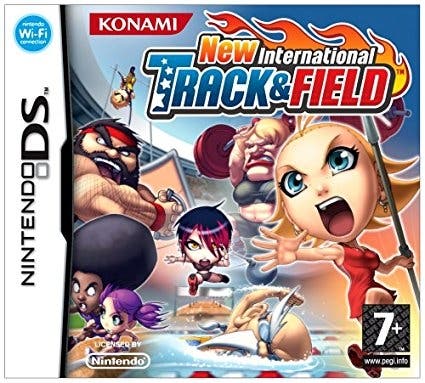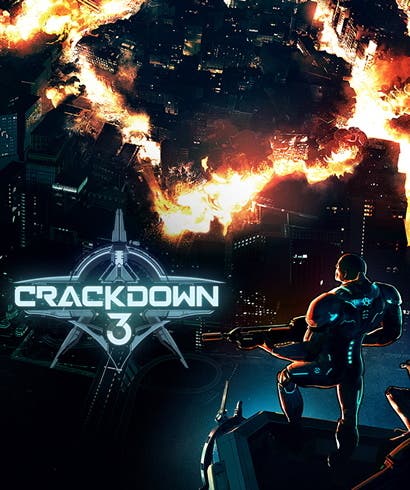The safest pair of hands in video games
A snapshot of Sumo Digital as it prepares to step out of the shadows.
There are always little symbols to look out for that can help you figure out if a game's going to be worthwhile. Once upon a time it might have been Nintendo's seal of quality, or maybe the logo of your favourite developer - back in the day it was Treasure's magic box, perhaps, or more recently the glimmering P of Platinum Games. In recent years, there's another logo I've always kept an eye out for, a symbol that's a guarantee of quality, and a certain little spark. Quite often, though, you have to look really hard for it.
Sumo Digital isn't the most widely known developer out there, though that's mostly by design. Since it was founded in 2003, the Sheffield studio has quietly built a strong reputation. It caught my attention with 2004's OutRun 2 port on Xbox, won my heart with OutRun 2006: Coast 2 Coast and by the time Sonic & All-Stars Racing Transformed was released in 2012 - the best Mario Kart game, until Mario Kart 8 came along at least - I was well and truly in love. You may well have played a Sumo Digital game before without realising it. I'm fairly sure you'll have enjoyed it, too.

"It's one of those things," says COO Paul Porter. "We've always done things under the radar, because it's other people's IP. The story's not about Sumo, the story's about the game, the publisher and the IP owner. We've always kept quiet in the background." Some of Sumo's work is even a surprise to me, a self-confessed fan of the studio - it was only upon meeting up with Sumo at last December's PlayStation Experience that I realised it was responsible for Colorado, one of the new Hitman's episodes, and there's plenty more unheralded work besides.
Now, though, Sumo Digital is preparing to step out of the shadows. For the first time in its 13 year history, the studio is preparing a solo effort, an all-new IP that's entirely its own. And, as you'd expect from a studio of Sumo's calibre, it's looking absolutely sublime; a colourful, characterful action adventure that borrows not only the palette of 90s platformers but their thirst for invention. Snake Pass, as it's called, has the potential to be a seriously special game.
Sumo's move towards independence began when Ian Livingstone came onboard as non-executive chairman in 2015. "He said you need to unleash some of the creativity in the studio," says Porter, "so they don't feel like they have to leave the company to create a game." The studio set up an internal gamejam, and thanks in particular to the efforts of Seb Liese - a Dutch designer who was working on Crackdown 3 at the time - the results were immediate.
Liese had been taking some time out to play around with Unreal Engine 4 as he got to grips with its ins and outs. "I was making a rope for the player to swing," he explains. "At some point I forgot to attach it to the ceiling and it fell down in this nice coil. There was something really satisfying about how it looked, I'd never seen it before, and I wondered if you could control this rope as a character."
What began as a rope soon evolved, thanks to Liese's own peculiar path into games development, into something else. Before long, that rope became a snake and the foundations of Snake Pass were formed. "I studied biology, and during university I had two pet snakes. I spent many hours watching television with them crawling through my hands. I had a good understanding of why they move that way, how they activate their muscles."

What's wonderful about Snake Pass, and what makes it stand out, is its approach to movement. You slither across levels, winding your body around obstacles and up and over surfaces. It's fluid and fun, and like the best platform games Snake Pass begins with an intuitive, rewarding moveset then builds out from there, folding in some unique challenges alongside the underlying traversal. It's helped by an exceptional amount of polish - this might be Sumo's first solo effort, but you can sense all the expertise it's acquired in its years of working with some of the most revered properties in the look and feel of Snake Pass.
The reception's been uniformly positive, too, with showings at EGX Rezzed winning over a new legion of fans, a response that mirrors that which Snake Pass received internally. "I was shocked how people reacted to it! I thought it was a cool idea, and when I showed it to other people I got confirmation it was something special," says Liese. "They gave me three guys to make something we could quickly put out on Steam as a promotional thing for Sumo, but when we presented what we'd done in a month to the bosses they were impressed and doubled the team working on this little idea I had just over a year ago."
Snake Pass is heading for release shortly on PC, PS4, Xbox One and - as has recently been announced - Nintendo's Switch, and I hope it succeeds in opening people's eyes to the quality of Sumo Digital's work. It's not the studio's only game this year, of course, and in Crackdown 3 it has possibly its biggest project yet. I wasn't entirely aware of Sumo's involvement in the project, though it seems it's doing its fair share of work (and Gareth Wilson, a former Bizarre employee responsible for Project Gotham Racing 3 and 4 is working as design director, which makes me all kinds of giddy), all of which is enough to calm any fears I had about the upcoming project.

Sumo's quiet about the project for now, which is understandable - not least because our conversation takes place on the show floor of Sony's PlayStation Experience in Anaheim - but you can bet you'll find its imprint on Crackdown 3 when it comes out, even if the developer itself might be kept out of the limelight. "What you hear a lot is that working on existing franchises doesn't require much creativity," says Liese. "That's actually the opposite - when you have so much set in stone, you start looking for where to be creative and you get to do all these nice touches. People love to put their stamp on things, to show there is love and creativity behind it and we're not just churning out the next number."
"The only way you survive in this industry is creating games that are good," adds Porter. "If you don't do that, it's a really quick journey to oblivion. If we release something that isn't a quality game, it's going to hurt our reputation. There's an ethos about adding value, an ethos about the last game we do being the best game we've done. The worst thing we could do is deliver something that's poor quality, so we try not to do that!"
It's impossible to talk to Sumo, of course, without bringing up its relationship with Sega, and where it might head next. The studio began with OutRun before firming its reputation with the outstanding Sonic & Sega All-Star Racing games. Sega's taken a smarter approach to its older IP in recent years through initiatives like the 3D Classics collections on the 3DS. What chance Sumo and Sega renewing their relationship in the near future? "They've got such a huge back catalogue, they could bring so much of it up to date," says Porter. "Their role is to make sure they do the right things at the right time - they could just flood the market! We'll see..."
What, then, would be Sumo's dream licence to work on? "You're asking a guy what his dream licence is when the first game he got was OutRun with Sega, then we got Virtua Tennis, then we did Sonic Racing, then we did Forza Horizon," Porter replies. "And now Crackdown! They're all games I've loved. I don't think anymore I wish I was working on that! I can't believe the opportunities we've had. We're just loving it. And now Dead Island! My god! As long as we keep on doing good work, more opportunities will come."


